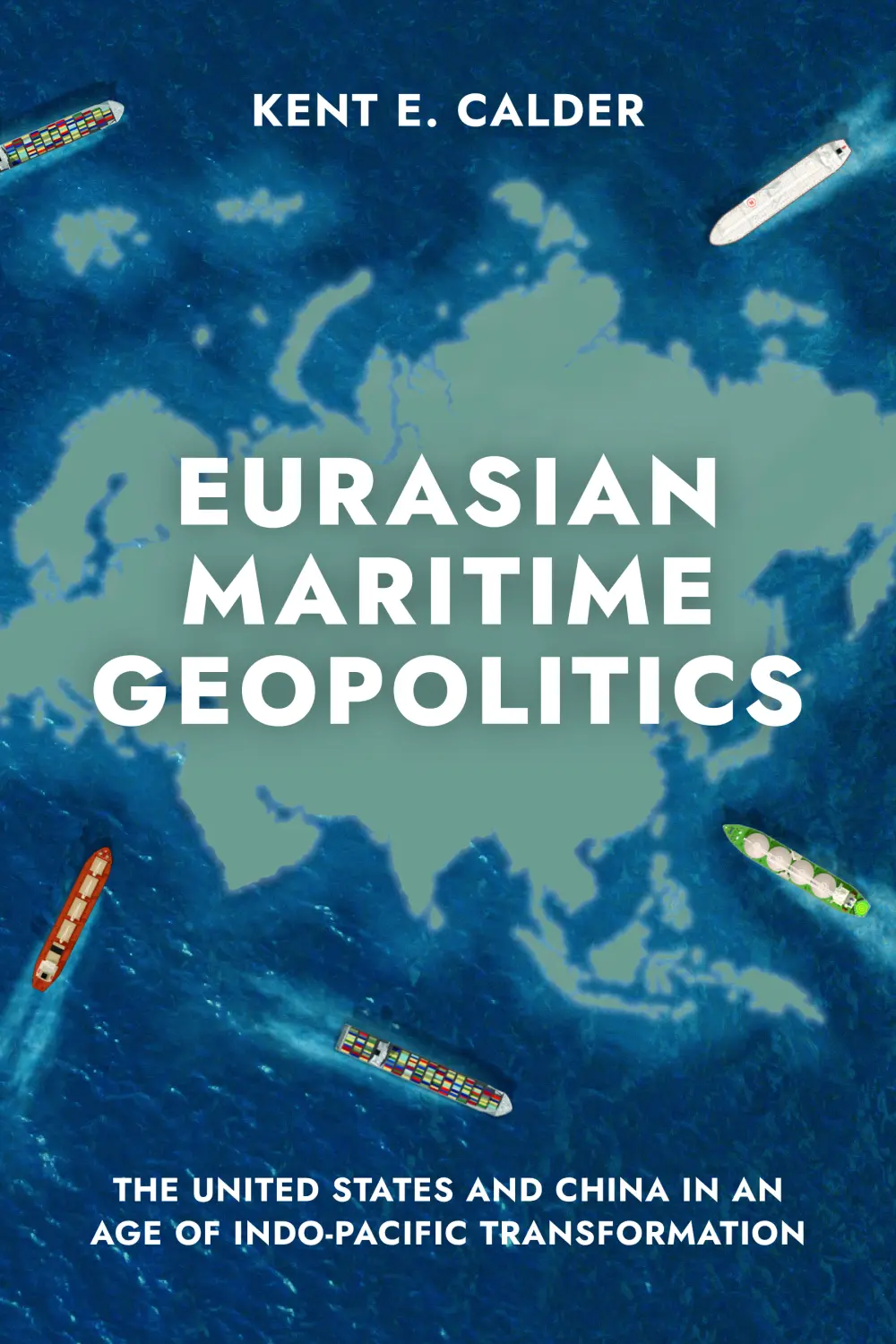Eurasian Maritime Geopolitics by Kent E. Calder examines the strategic geography of the sea lanes from Northeast Asia through the Indian Ocean to Europe, through which much of the world’s energy and information flows. Calder shows how changing technology and economic patterns have profoundly transformed the global significance of those passage ways since the end of the Cold War, with fateful consequences for the strategic calculations of both the United States and a rising China. The decline of the US shipping and shipbuilding sectors, coupled with the rise of their Chinese counterparts, is a major part of this hybrid equation.
The book provides readers a history of the changing economic role of the sea lanes as well as the decline of US maritime competitiveness. It chronicles how maritime flows of energy, commodities, and information through submarine cables have increased. Calder’s clear eyed assessment documents the uncertainties relating to Eurasian sea lanes stretching from Taiwan to the Red Sea and beyond in the post-Ukraine world.
Table of Contents
- The Strategic Geography of Eurasia’s Sea Lanes
- The Changing Geo-Economics of the Sea Lanes
- Linking Land and Sea: The Transformation of Eurasia’s Rimlands
- Guardians at the Gate: The Anglo-Saxons and the Indo-Pacific 5 The Challenger: China and Eurasia’s Sea Lanes
- The Stem of Victory: Infrastructure and the Sea Lanes
- The Changing Chessboard of Sea-Lane Geopolitics
- Shadows and Critical Uncertainties
- Prospects and Policy Implications
Author
Kent E. Calder is the director of the Reischauer Center for East Asian Studies at Johns Hopkins University, School of Advanced International Studies (SAIS), and a globally recognized specialist on East Asian security and political economy. Prior to SAIS, Calder served as special advisor to the U.S. Ambassador to Japan and was the Japan Chair at the Center for Strategic and International Studies (CSIS).
